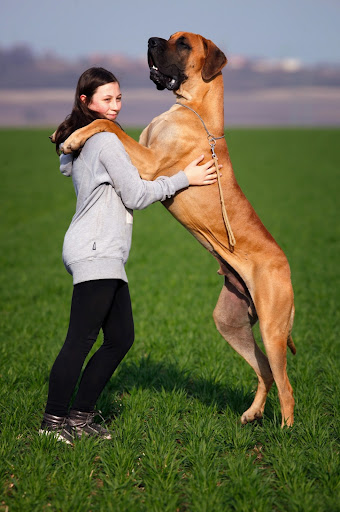
You and everyone you know has a unique personality. Everyone has a different learning style, and dogs do too!
Understanding your dog’s personality can help significantly with training your dog and teaching it the behaviors you want to see in them.
Check out these five common personality types found in dogs, and training tips that work best for each dog’s learning style.
1. The Confident Dog

Natural-born leaders, the Confident Dog is happy to take charge in any situation, but can also be a team player. These dogs are comfortable in their own skin, as well as in their surroundings, and often exude confidence in their body language.
Training: Confident dogs may display dominant behaviors. Try not to react harshly or to dominate them back. This type of dog may be prone to stubbornness or aggression. Positive reinforcement is always the best way to train a dog, even one with the confident personality type.
Pro Tip: Dominance is not a personality type but a way to determine and describe hierarchy between individual dogs. Dogs only need confidence and the ability to lead a pack, not aggressiveness, to maintain alpha status.
2. The Shy or Timid Dog

The shy dog can be timid, nervous, insecure, unconfident and/or fearful. These dogs don’t like being in uncomfortable situations and often react poorly to noisy, chaotic environments as well as sudden or loud sounds.
Training: Shy dogs tend to respond well to calm, gentle treatment and lots of praise, treats and encouragement. They need a lot of reassurance that they are safe, secure, and loved. Heavy handed treatment can push a shy dog to shut down and lose trust in you. In addition, shy dogs need to be introduced to new people, places and experiences at a slower pace than other dogs. It’s best not to force shy dogs into uncomfortable situations. This is because they may not see it as you trying to acclimate them to the world, but rather as you forcing them into scary situations, which could lead to them mistrusting you.
3. The Laidback, Happy Dog

The laidback, happy dog is your stereotypical friendly pup who loves people, dogs and even cats. They tend to be very enthusiastic and energetic and can become easily over-excited, especially without training or exercise. These dogs are more likely to jump on people to greet them or scare small children if they’re large.
Training: Laidback, happy dogs need training to help prevent them from jumping and, in general, to keep them calm around others. Obedience training will help your happy dog resist his or her excitement by listening to your commands (sit, stay, heel, etc.).
4. The Independent Dog

Independent dogs tend to bond with one or two people who they see as their leader, but react less enthusiastically to others. In fact, they may not ever bond with anyone outside of their family. They are very okay spending time on their own and away from crowds, which may make them seem standoffish. The independent dog often acts this way because of instinct, having been bred to live independently of people.
Training: Independent dogs can be difficult to train. They need the right kind of motivation because without it, they would rather think for themselves than do what you ask. You might need to experiment to see what motivates your independent dog, from treats to praise and affection to toys, or something else altogether. Heavy handed treatment may lead to loss of trust in you or respect for you. And it’s best not to force independent dogs to be social, as that could cause them to turn to aggression. Make sure to give your independent dog the space he needs.
5. The Adaptable Dog

Adaptable dogs are cooperative and obedient, calm and gentle, loving and affectionate. They are always eager to please and, unlike happy dogs, will control their excitement to make their people happy. They are friendly and outgoing (though not as much as the happy dog), while not being too exuberant and get along well with other people, dogs and cats.
Training: Adaptable dogs are the easiest of the five personality types to train because they have such a strong desire to please. They happily follow the commands of their owners, who they see as a leader figure. Because they are so trainable – as well as obedient, calm and affectionate – adaptable dogs make for great family dogs as well as therapy dogs.
So now that you know the five major personality types in dogs, which one (or several) does your dog have?


